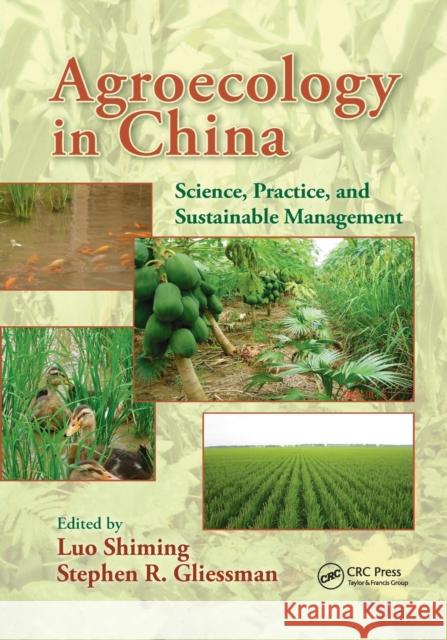Agroecology in China: Science, Practice, and Sustainable Management » książka
Agroecology in China: Science, Practice, and Sustainable Management
ISBN-13: 9780367112516 / Angielski / Miękka / 2018 / 472 str.
Agroecology in China: Science, Practice, and Sustainable Management
ISBN-13: 9780367112516 / Angielski / Miękka / 2018 / 472 str.
(netto: 231,28 VAT: 5%)
Najniższa cena z 30 dni: 236,70
ok. 22 dni roboczych
Dostawa w 2026 r.
Darmowa dostawa!
During the past 30 years, industrialization has fundamentally changed traditional rural life and agricultural practices in China. While the incomes of farmers have increased, serious issues have been raised concerning the environment, resource depletion, and food safety. In response, the Chinese government and Chinese scientists encouraged eco-agriculture, the practice of agroecology principles and philosophy, as a way to reduce the negative consequences of large-scale industrialized systems of farming. Agroecology in China: Science, Practice, and Sustainable Management represents the work of experts and leaders who have taught, researched, and expanded Chinese agroecology and eco-agriculture for more than 30 years. It reviews decades of agricultural change to provide an integrated analysis of the progress of research and development in agroecological farming practices. The book contains research on traditional and newly developed agricultural systems in China, including intercropping systems, rainfall harvest systems, and rice-duck, rice-fish, and rice-frog co-culture systems. It covers current eco-agriculture practices in the major regions of China according to climate conditions. The book closes with a discussion of the major technical approaches, necessary policy support, and possible major development stages that must occur to allow broader agroecological implementations toward the sustainability of future food systems in China. Presenting eco-agriculture systems that are somewhat unique in comparison to those of the United States, Latin America, and Europe, Agroecology in China gives insight on how Chinese agroecologists, under the political and cultural systems specific to China, have created a strong foundation for ecologically sound agroecosystem design and management that can be applied and adapted to food systems elsewhere in the world. By using selected regional examinations of agroecological efforts in China as examples, this book provides models of how to conduct research on a broad range of agroecosystems found worldwide.











